All about Chinese actinidia
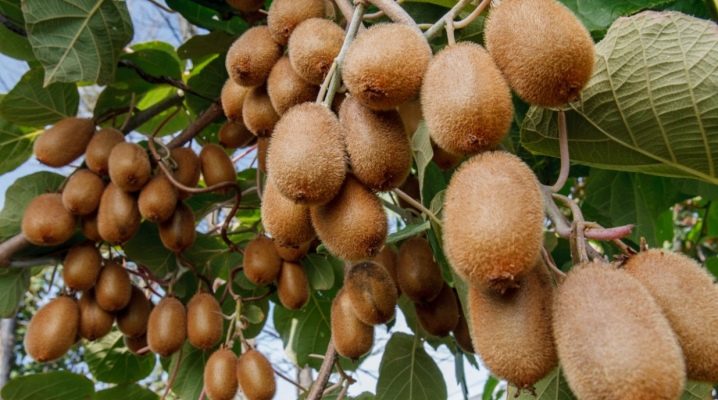
Chinese actinidia produces very tasty fruits, it is also called kiwi. The culture grows in the north and west of China.
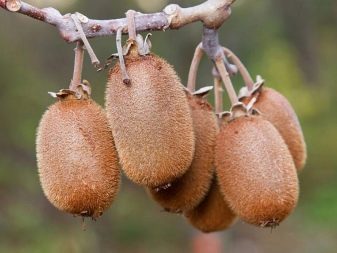
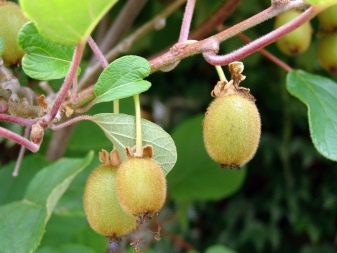
Description of the plant
The plant is a perennial deciduous vine with a superficial root system. The inhabitants of China use actinidia not only for food, but also as a medicine. This fruit is also found in Russian stores. There are varieties that can be grown in the domestic climate. This plant is not much different from kiwi, it can be called a more northern relative of the well-known fruit. Many are also interested in what are the colors of actinidia. The color of the fruit is the same as that of kiwi - brownish-greenish.
The plant grows up to 10 m in length. Young twigs are thin and can curl around established supports. As they develop, their lignification begins. The shoots remain pleasant to the touch; they, like the large oval foliage, have a soft fluff. Flowering occurs in late spring. During this period, a light pleasant aroma emanates from actinidia.
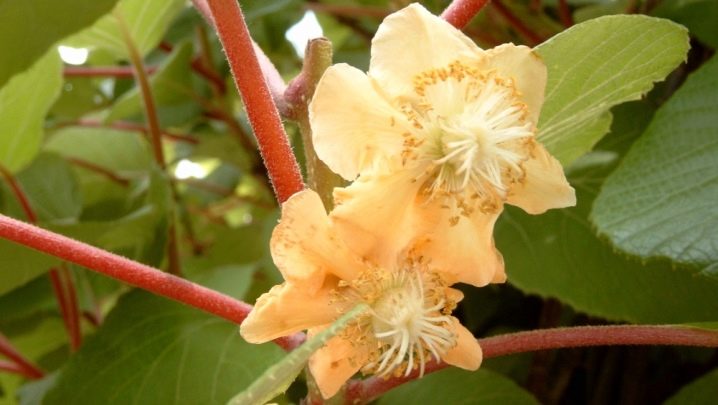
There are dioecious and monoecious plant varieties. Shoots of the first type expel inflorescences of the same sex. Corollas are snow-white, sometimes golden yellow or orange. Fruits emerge only from female flowers. The male function is solely to pollinate.
The shape of the fruits of actinidia is oval, slightly elongated. The thin brown skin is covered with villi. The pulp is green, with a lighter shade in the center. There are numerous miniature black seeds on it. The fruits of this plant resemble kiwi not only in appearance, but also in taste.
Growing
There are many nuances in the cultivation of actinidia that all gardeners should know about.
A place
This crop must be planted away from apple trees. Do not forget that this is a tropical plant, which means that it needs a lot of sun. Choose open areas. Outdoor planting is only suitable for southern regions.
It is best to plant an exotic beauty in a greenhouse complex or in a winter garden. This crop requires good lighting, a tropical plant loves the sun. Planting is performed in early spring or autumn.

The soil
Actinidia will not be able to grow normally on heavy soils. For its planting, it is necessary to choose loamy and sandy loam soils. Tropical crops require acidified, lightly drained and permanently moist soil. It is important to prevent the appearance of weeds, to remove them promptly.
Mulching with peat helps to maintain soil moisture. Sand and sawdust are also used for this purpose. This allows you to avoid loosening, digging the soil around the plant, so as not to injure the root system.
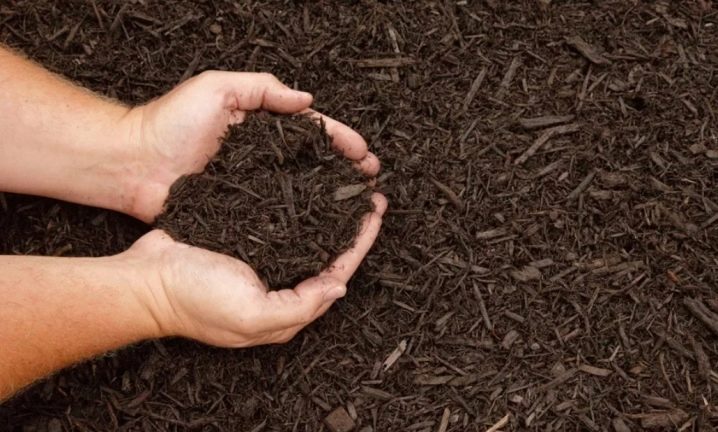
Landing
It is recommended to plant two-year-old plants. Roots need a lot of space. Maintain a distance of 2 m.
Vines grow intensively and well. The pit for planting should have a size of 60x60x60 cm. A drainage system is created and a mixture consisting of 1 part of leaves and peat, manure, river sand and 2 parts of turf is poured. You can use ready-made substrates for growing tropical crops.
A clod of earth cannot be stirred up during the transplantation process, it is lowered into the hole in its original form, burying it at the same level that it was at the time of sale.
Watering
Chinese actinidia needs abundant irrigation and high humidity. The plant is irrigated at intervals of one day. It is recommended to do this in the evenings; a fine spray is put on the hose.

Top dressing
Actinidia needs periodic feeding - this will stimulate its growth, fruit ovary. It is unacceptable to add ash and lime to the ground by scattering in the near-trunk zone. More preferable is the option of introducing in solutions.
After the plant enters the fruiting phase, it is recommended to feed it with organic fertilizers. An infusion of chicken manure, mullein or ready-made mixtures, for example, "Gumisol", is excellent for this purpose. Store fertilizers should be applied in accordance with the instructions.
Actinidia need not only organic, but also mineral supplements. They are applied up to 3 times during the growing season. The first application of fertilizers is performed at the end of March, the second - on the eve of flowering, the third time the plants are fed in the fall, after the harvest is harvested.

Preparing for winter
Actinidia is a thermophilic plant, even slight drops in temperature below zero are destructive for it. For this reason, it will not be possible to grow it in the open field in the northern latitudes, only in the southern ones.
First of all, young plants need shelter. In order to protect them from the cold, dry leaves and a peat layer are used. Shoots are laid on mulch and covered with crumbling leaves, needles, spruce branches. Top covered plants can be covered with snow. Sometimes a poison is placed under cover so that rodents do not nest in young shoots. The liana is covered after the establishment of stable cold weather, at temperatures around zero degrees.
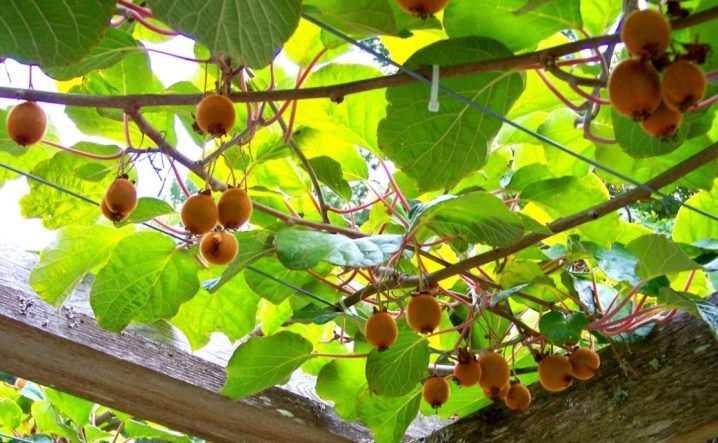
Reproduction
There are several ways to reproduce actinidia:
-
seeds;
-
seedlings;
-
layering;
-
vaccination.
Growing seedlings from seeds takes several years. Among gardeners, there are those who claim that the planting material obtained in this way demonstrates the best survival rate. Plants grow stronger and more resistant to adverse external influences. But varietal characteristics are lost, and over a long period it is difficult to distinguish female from male plants.
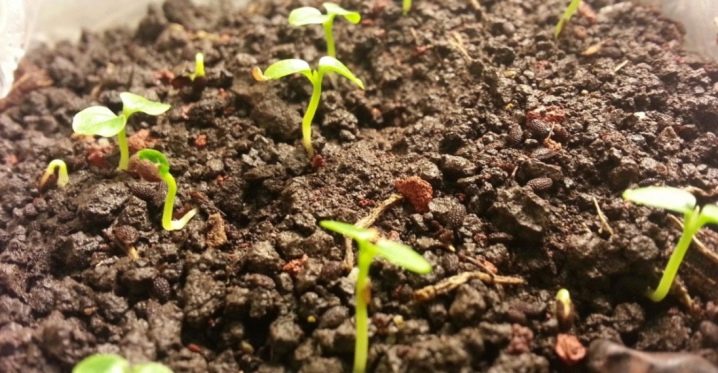
To facilitate the process, you can purchase ready-made seedlings, the floor of which is known in advance.
Diseases and pests
Actinidia can hardly be called an unpretentious plant, it requires constant care and maintenance. Mistakes can lead to disease. Despite all its exoticism, actinidia is quite resistant to diseases and pests. Moreover, it is very susceptible to negative temperatures.
But it is still impossible to completely exclude the likelihood of disease and pest infestation. The plant can be harmed by leaf beetles, bark beetles, caterpillars.
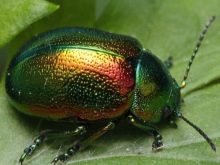

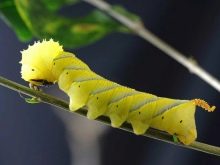
Pest control and prevention of subsequent infestation consists in removing the remnants of damaged parts from the vines and burning them. In the spring, it makes sense to process not only actinidia itself with Bordeaux liquid, but also the land around the tree to destroy the larvae laid by harmful insects. They are found in the soil and on the bark of trees. With a strong infection, you can treat the vine with insecticides. An unpretentious plant as a whole can sometimes be affected by powdery mildew and other fungal diseases. This is evidenced by dark spots on the leaves of the vine. The affected parts must be removed. In the fight against powdery mildew, an aqueous solution of soda ash helps.
It is quite possible to create suitable conditions in the garden for an exotic beauty, but for this you will have to try hard. But all the efforts made will be fully justified.
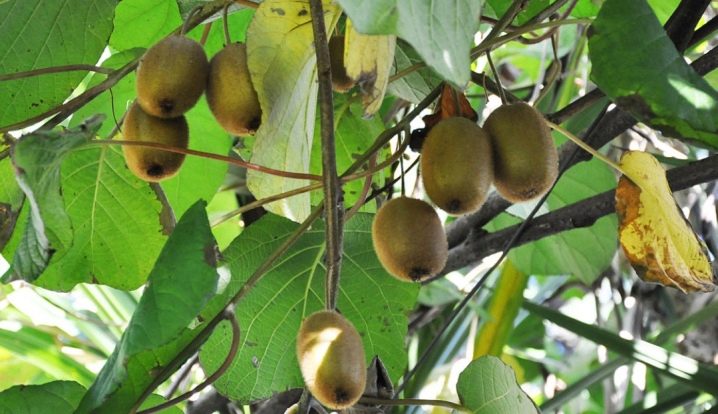











The comment was sent successfully.